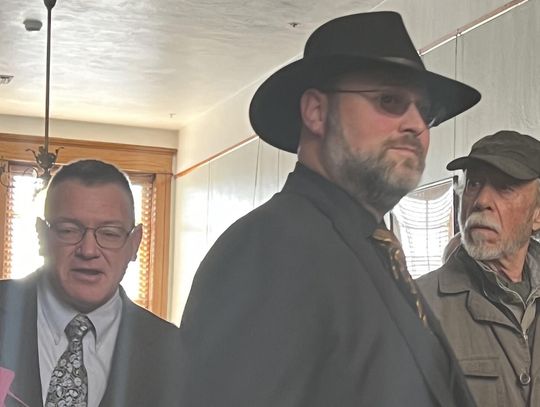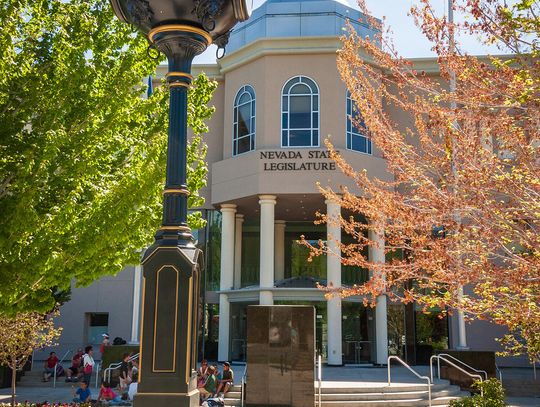It has been a few months since I have written those words as my standard introduction to the weekly updates about the Great Basin Basket Farm Share program. The farm share is one of the major programs at my day job, The Fallon Food Hub. We partner with farmers and other agricultural producers in Churchill County, the wider west central Nevada ag-community, and with a select group of small family farms west of the Sierras to aggregate and distribute produce and farm products. The purpose of our farm share program is to provide an easy avenue for members of our community to support local farmers and to receive regular boxes of the amazing products that are grown right here. In 2022, The Fallon Food Hub is expanding our program from a twenty-week delivery season in the summertime to an 11-month long program.
This regular community column in The Fallon Post represents an opportunity for me to educate, empower, and encourage you to cook more meals from scratch in your kitchen. Cooking is such an all-inclusive activity and one that can be extremely rewarding, so long as you can avoid major obstacles and pitfalls that can derail a well-executed dinner. One of the obstacles that pops up quite frequently is the quality of your ingredients. At the restaurant we used to say that trying to make a great dish out of poor ingredients is like “putting lipstick on a pig.” Cooking with locally grown (and raised) ingredients is a really effective way of avoiding the quality obstacle.
This brings me to a tale of two carrots. The story is a perfect explanation of the difference between produce raised by small farmers and produce that comes out of an industrial agricultural system. Farmers choose the varieties of produce they grow based on a number of factors that are specific to what they value and prioritize. Factors like germination temperatures, maturation timeline, frost-hardiness, and other production-related specifications inform producers about what varietals are well-suited for their growing regions. Farmers will often choose to grow to produce based on taste, aesthetics, and uniqueness. In large-scale, industrial growing operations, the priority is often placed on efficiency. The carrots that you see in the produce section of major retailers are grown at such a scale that the variety is chosen because it is well-suited for the systems that are used within an industrial model. For example, a carrot could excel in this system if: it grows fast; can be harvested, cleaned, and packaged mechanically; and can be transported long distances and stored for lengthy periods of time without going limp. Meanwhile, our local farmers are choosing carrots because they are the sweetest, most delicious, beautiful carrots you have ever seen or tasted.
Here are a couple of other really important differences between produce that is grown locally versus produce that is travelling on the national supply chain. On average, farmers receive around five cents of every dollar that a shopper spends on produce at a major retailer. If you buy produce at a farmers’ market, from a farm stand, or through a farm share, the farmer pockets at least fifty cents from every dollar you spend. Produce travels, on average, 1,500 miles from farms to commercial retailers. The produce that the Food Hub distributes travels an average of 60 miles from farm to kitchen, in Fallon, this distance is closer to a 15-mile average.
While sticking to local produce means that you have to cook what is in season, the benefit is that produce that is prepared quickly after harvesting (#local) and is in season is the tastiest.
In honor of “what’s in season,” here is a quick and easy recipe for butternut squash soup. You can prepare this soup with any hard winter squash including locally available kabocha, butternut, acorn, and autumn frost.
Quick and Easy Stovetop Butternut Squash Soup
Recipe from J. Kenji Alt-Lopez
INGREDIENTS:
4 T unsalted butter
1 medium onion, diced
2 stalks celery, diced
1 medium carrot, diced
3 sprigs fresh thyme
Kosher salt and freshly ground black pepper
1 1/2 quarts homemade chicken or vegetable stock, or store-bought low-sodium chicken stock
One butternut squash, peeled, seeded, and cut into rough chunks
2 bay leaves
1/2 cup heavy cream
Small squeeze fresh lemon juice
1 to 2 T brown or white sugar
DIRECTIONS:
Heat butter in a large saucepan or Dutch oven over medium-high heat until melted. Continue cooking, swirling pan constantly, until butter solids are lightly browned, and the butter smells nutty, about one minute longer. Immediately add onion, celery, carrot, and thyme, reduce heat to medium, season with salt and pepper, and cook, stirring occasionally, until vegetables are softened but not browned, about 5 minutes. Add stock, squash, and bay leaves. Increase heat to high and bring to a boil. Reduce to a bare simmer and cook until squash is completely tender about 20 minutes.
Using tongs, discard bay leaves and thyme stems. Add heavy cream. Using an immersion blender or working in batches in a countertop blender, blend soup until completely smooth. Season to taste with salt, pepper, and lemon juice. Add sugar if desired (some squashes are naturally sweeter than others). Serve.









































Comment
Comments